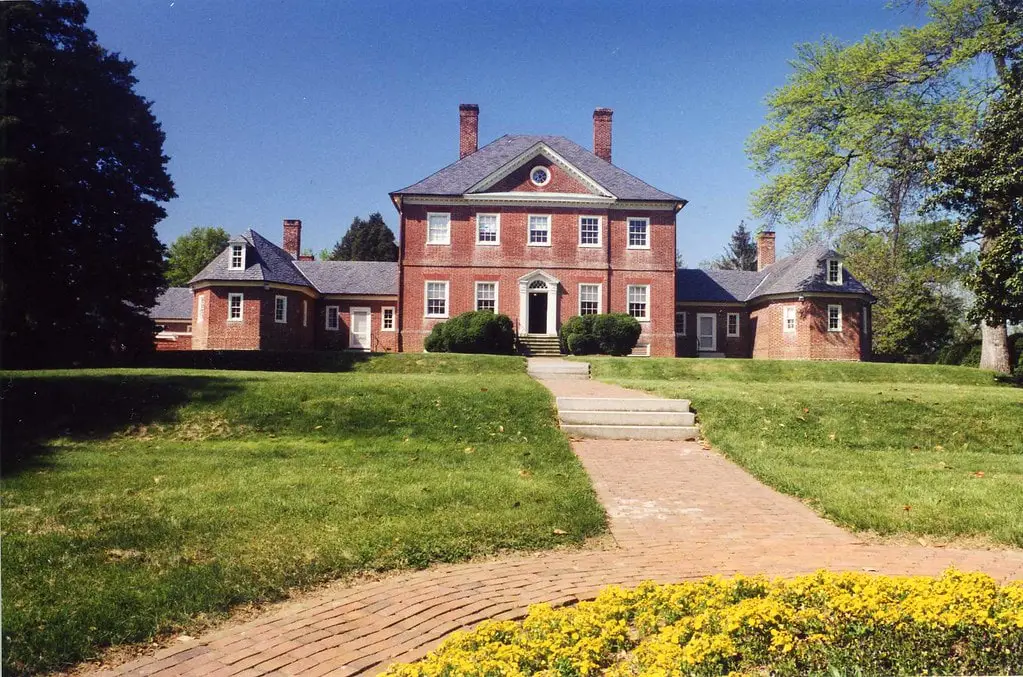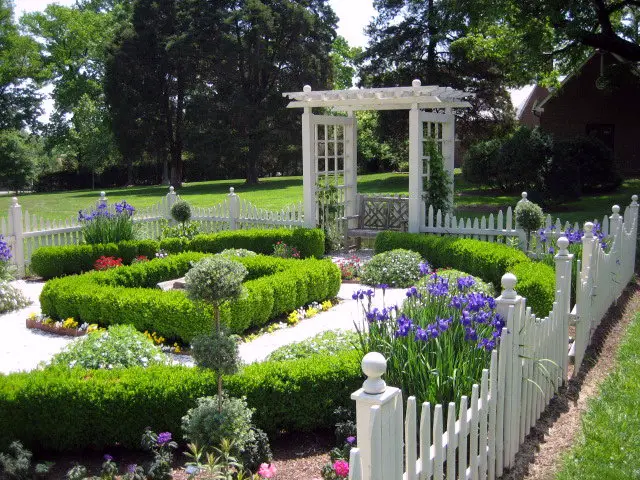Montpelier Mansion: A Glimpse into Laurel's Rich History
Nestled in Laurel, Maryland, Montpelier Mansion is a testament to American history's rich tapestry. Built in the 1780s, this Georgian-style plantation house, sometimes called the Snowden-Long House or New Birmingham, has witnessed the unfolding of numerous historical chapters.
Its architecture, a splendid example of 18th-century design, earned it a well-deserved place on the U.S. National Register of Historic Places and a U.S. National Historic Landmark.
The mansion's construction, attributed to Major Thomas Snowden and his wife Anne, marks a significant era in American architectural history. The Georgian style, characterized by its symmetry and classic proportions, is evident in the mansion's five-part structure and central block.
The year 1970 saw Montpelier Mansion being officially recognized for its architectural prowess. This recognition highlights not only its aesthetic appeal but also its contribution to the national architectural heritage.
Beyond its architectural significance, Montpelier Mansion has been a silent witness to the evolving narrative of America. The mansion, originally part of a larger slave plantation, reflects a crucial period in American history. The Snowdens, who were prominent figures in the local ironworks industry, played a pivotal role in the economic and social fabric of the region.
The mansion, therefore, is not just a structure of bricks and mortar; it is a repository of stories, some told and many untold, of those who lived and worked within its walls.
As one explores the mansion and its surroundings, it becomes evident that Montpelier Mansion is more than just a historical landmark. It is a place where the past and present converge, offering things to do in Laurel, Maryland, for history enthusiasts and casual visitors alike.
From its meticulously maintained gardens to the carefully preserved rooms, each corner of the mansion offers a glimpse into a bygone era, inviting visitors to step back in time and experience the legacy of the Snowden family and the many lives that intersected with theirs.
In conclusion, Montpelier Mansion is not just a monument of historical importance; it is a symbol of the American journey, encapsulating moments of architectural brilliance, economic development, and social evolution. Today, the mansion continues to educate and inspire, making it a must-visit destination for anyone interested in the rich tapestry of American history.
The Snowden Family Legacy
The Snowden Lineage and Their Impact
The story of Montpelier Mansion is deeply intertwined with the history of the Snowden family, whose roots trace back to Richard Snowden's migration to America in 1658 from Birmingham, England. The Snowdens, over generations, established themselves as influential figures in Maryland.
Richard the immigrant's descendants, particularly Richard the "iron master" (d. 1763), amassed considerable wealth through their iron forge, tapping into the local iron deposits. This fortune laid the groundwork for the construction of Montpelier Mansion by Major Thomas Snowden (1751-1803) and his wife Anne Ridgely around 1783.
The Snowdens' Industrial Ventures
The Snowdens were prominent landowners and key players in the burgeoning industrial scene of the region. Their involvement in the ironworks industry was a significant economic driver, contributing to the development of the local community and beyond.
The iron forge operated by the Snowdens was a cornerstone of their wealth, showcasing the integration of industry and agriculture in the 18th-century American economy.
Enslavement and the Plantation System
A critical yet sad aspect of the Snowden family's history is their ownership of a slave plantation. At one point, the mansion was part of a vast estate that included about 9,000 acres, worked by enslaved individuals. This aspect of the Snowden legacy reflects the complex and often painful history of the United States, offering a stark reminder of the human cost of economic prosperity in that era.

Architectural Marvels of Montpelier Mansion
Georgian Architectural Splendor
Montpelier Mansion is a quintessential example of Georgian architecture, a style prevalent in the American colonies in the 18th century. The mansion's design features a symmetrical layout with a central block and two flanking end pavilions connected by hyphens.
The two-story main block, adorned with a five-bay elevation and a three-bay projecting pavilion topped by a pediment, showcases the elegance and balance characteristic of Georgian architecture.
Interior Design and Secret Passages
The interior of Montpelier Mansion is as impressive as its exterior. The mansion boasts intricately carved woodwork, a hallmark of affluent homes during that period. Notably, the paneling in the drawing room conceals a secret doorway leading to a hidden set of stairs. This feature adds an element of mystery and intrigue to the mansion, reflecting the architectural creativity of the time.
The Historic Summer House
One of the unique features of Montpelier Mansion is its 18th-century summer house, also known as a "belvedere." This structure, located on the mansion's grounds, is one of only two summer houses in Maryland still resting on their original foundations.
With its hexagonal shape, the summer house was a place for relaxation and entertainment, offering a glimpse into the leisurely pursuits of the era's elite.
Montpelier House Through the Ages
Transition of Ownership
After the Snowdens, Montpelier Mansion experienced a series of ownership changes that shaped its history. In the late 19th century, the mansion was acquired by speculative investors W.P. Davis and Martin W. Chollar. By 1895, it became the summer home of Josephine D. Taylor from New York.
The early 20th century saw New York writer Edmund H. Pendleton taking residence, making Montpelier his winter home until he died in 1910. Following Pendleton's tenure, Otto V. von Schrader became the owner in 1911.
Public Acquisition and Restoration
The mansion's narrative took a significant turn in 1961 when Christine L. Willcox, the last private owner and daughter of Breckinridge Long, former Undersecretary of State under Franklin D. Roosevelt, donated the property to the Maryland National Capital Park and Planning Commission.
This transition marked the beginning of Montpelier Mansion's journey as a public historical site. In 1976, during the U.S. Bicentennial celebrations, the mansion was opened to the public. That same year, a barn intended to become a public arts center was unfortunately destroyed by arson.
The 1980s brought a new chapter with state-funded renovations, revitalizing the mansion and preparing it for its role as a public tourist attraction.

Montpelier Mansion Today
Since its opening to the public in 1985, Montpelier Mansion has been a vibrant cultural and historical education center. The mansion, reflecting its state in 1830 under the ownership of Nicholas Snowden, offers visitors a glimpse into its rich past. The site now serves as a historical landmark and a venue for various events, including conferences and weddings.
Montpelier Mansion as a Cultural Hub
Hosting Exhibitions and Performances
Montpelier Mansion has become a cultural hub, hosting various exhibitions and performances. These events range from historical reenactments to art exhibitions, each adding a layer to the mansion's rich tapestry of history and culture. The mansion's ability to serve as a versatile venue has become a cornerstone in the local cultural scene.
Educational Programs and Community Engagement
The mansion's role extends beyond entertainment, serving as an educational resource. Visitors, students, and history enthusiasts can delve into the mansion's past and learn about the broader context of American history through various programs and tours.
These educational initiatives foster community engagement and ensure the mansion's history is accessible to a wider audience.
A Venue for Private and Public Events
Montpelier Mansion's picturesque setting and historical ambiance make it an ideal location for private events like weddings and conferences. The mansion's grounds and facilities offer a unique blend of historical elegance and modern amenities, providing an unforgettable backdrop for various occasions.
This aspect of the mansion adds to its appeal and helps preserve and maintain it, ensuring it remains a cherished landmark for future generations.
Visiting Mansion Today
Planning Your Visit
Montpelier Mansion, a historical gem in Laurel, Maryland, welcomes visitors year-round. The mansion offers a range of experiences, from self-guided tours to group tours for parties of 10 or more, with reservations required for groups.
Contact details for booking are readily available, ensuring a seamless visit planning process. The mansion's operating hours cater to a wide audience, with the grounds open daily from dawn to dusk, encouraging visitors to explore at their leisure.
Features and Amenities
Visitors to Montpelier Mansion are greeted with various features highlighting its historical and architectural significance. The mansion boasts 18th-century Georgian architecture, a testament to its rich past. One of its notable features is the well-preserved summer house, a rare example of 18th-century leisure architecture.
The mansion is surrounded by beautifully maintained flower and herb gardens and indoor and outdoor exhibits enriching the visitor experience. For convenience, the mansion offers a range of amenities, including a gift shop and accessible facilities, ensuring a comfortable visit for all.

Admission and Guidelines
Montpelier Mansion is committed to making history accessible to everyone. Admission fees are modest, with different rates for seniors, adults, and children and free entry for children under four.
The mansion encourages picnics on its grounds but asks visitors to be mindful of carrying out their trash. Dog owners are welcome to bring their pets, provided they are on a leash and cleaned up afterward, making it a pet-friendly historical site.
Montpelier House in Contemporary News
Recent Initiatives and Discoveries
In recent years, Montpelier Mansion has been in the news for various initiatives and discoveries. One notable project is the mansion's effort to trace the descendants of the individuals enslaved by the Snowden family. This initiative is part of a broader endeavor to present a more inclusive and comprehensive history of the mansion and its inhabitants.
Hosting Special Events and Exhibitions
Montpelier Mansion continues to be a vibrant venue for special events and exhibitions. These events range from historical commemorations to contemporary art exhibitions, each adding a new dimension to the mansion's appeal. The mansion's ability to host diverse events underscores its significance as a cultural and historical landmark.
Ongoing Preservation Efforts
The preservation of Montpelier Mansion remains a priority, with ongoing efforts to maintain and restore this historic site. These efforts ensure that the mansion remains a vital part of Laurel's cultural landscape, offering insights into America's past while serving as a beacon for future generations.
The community's involvement in these preservation efforts highlights the mansion's importance as a shared historical treasure.
